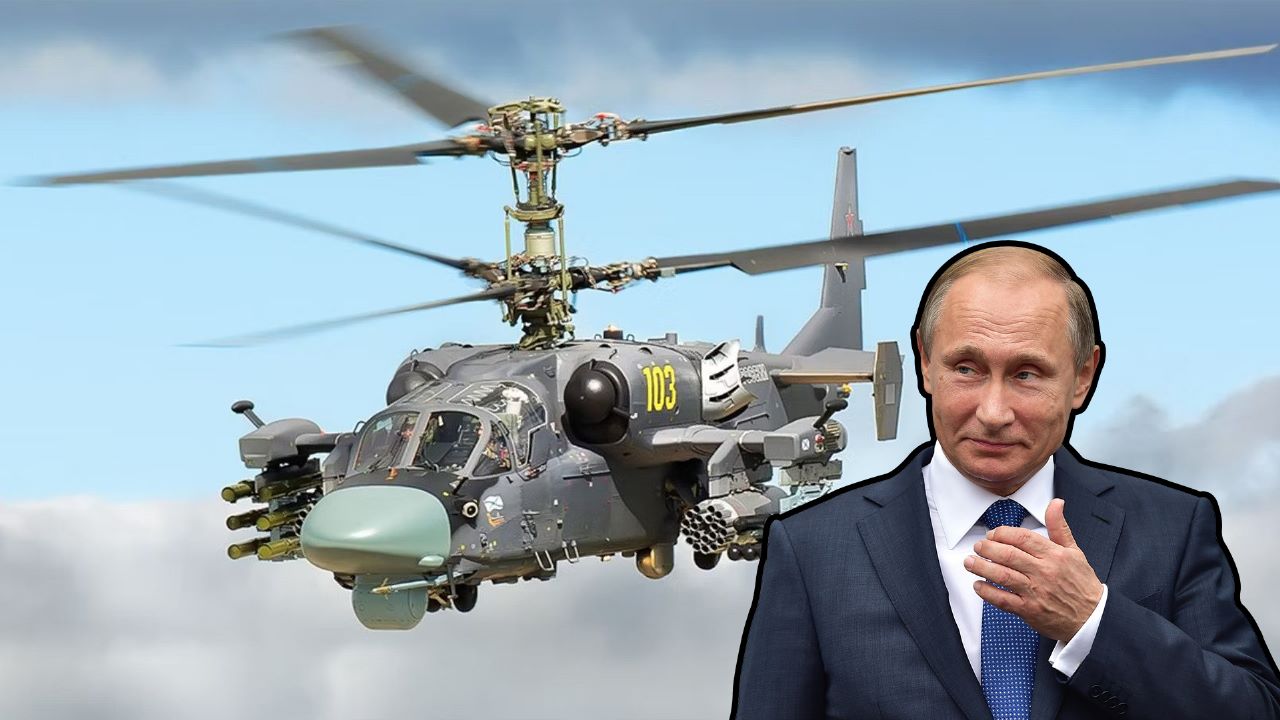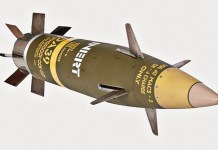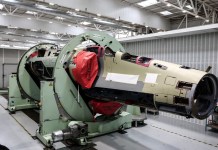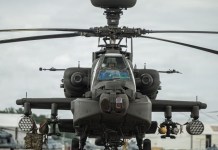When Russia invaded Ukraine, it literally went in with all guns blazing. Its Kamov Ka-52 was packing a lot of firepower, wreaking havoc on Ukrainian targets. As Man Portable Air Defense Systems (MANPADS) became ubiquitous on the battlefield, experts spelled doom for attack helicopters.
1st Kill By ‘Artificial Intelligence’! Russia Says Its S-350 Vityaz System ‘Shot Down’ Ukrainian Aircraft In Auto Mode
However, the recent exploits of the twin-seater all-weather Russian attack helicopter in the war against Ukraine have been spectacular for the rotor wing aircraft. According to the Oryx open intelligence blog, Russia has confirmed losses of at least 62 attack helicopters since the beginning of the Ukraine war.
The statistics include 35 Kamov Ka-52 ‘Alligators,’ 12 Mi-28 ‘Havocs,’ 9 Mi-35s, and six older Mi-24 ‘Hinds.’ The lost Ka-52s represent 30 percent of the entire Russian fleet of Ka-52. These heavy losses have made experts doubt the future of attack helicopters in modern warfare.
Experts have been contending that the sun is setting as they become vulnerable to ground fire, especially shoulder-fired surface-to-air missiles unless they change tactics.
The Russians were forced to push their helicopter assets further into the territory and could not operate deep into Ukrainian territory. Last week, however, observers of the Russian-Ukraine War noticed the sky over Ukraine “teeming” with Ka-52 Alligators and Mini-28 Night Hunters.
It seems that the Russian weapon designers have found an antidote to the FIM-92 Stinger MANPAD missiles, made available in large numbers to Ukraine by the US.
Recently Ka-52 demonstrated why it had earned the moniker of ‘Alligator’ as it took on 18 MANPADS by jamming their frequency, completed its mission, and returned to the base unscathed.
The secret lies in an air defense system named Vitebsk-25, developed by Russia. The export name of the electronic warfare system is President-S.
“Unless the Russians find a way to deceive the shoulder-fired surface-to-air missiles, helicopters, as we know, can walk into the sunset. Presence of kamikaze drones and other unmanned aerial threats in the asymmetric battlefield is making a helicopter more and more vulnerable,” an Indian Air Force helicopter pilot told the EurAsian Times, requesting anonymity.
He added that helicopters would be the platforms of choice for exfiltration and casualty evacuation. “As of now, helicopters are the best fit for Exfil and CASEVAC. But they require other aerial platforms – both fixed wing and rotary wing – to dominate the air in the kill box. Now the decision lies with the commanders as to how much resources they are going to spare for these rescue missions,” the officer added.
Vitebsk-25
The Vitebsk-25 has given the helicopters a new lease of life. The system was first showcased at Eurosatory-2010 in Paris in 2010. But people were skeptical of the claims about the large number of missiles it could deflect.

Initially, Russia deployed Vitebsk-fitted aircraft and medium-lift helicopters in the Syrian conflict, and the results were impressive. Russian officials have claimed that not a single helicopter equipped with Vitebsk was hit by “terrorists’ MANPADS missiles.”
Ka-52 helicopters mounted with the electronic warfare system were also subjected to grueling tests by the Egyptian Ministry of Defense that launched two dozen Russian IGLA MANPADS missiles, and none of them could hit the helicopter.
President-S At The Service Of The Russian Air Force
The best feature of the system is to operate in fully automatic mode, which allows it to respond to threats without waiting for the crew’s decision. It is highly modular and can be easily integrated into a wider range of aircraft types and configurations.
The Vitebsk-25 self-defense system consists of an infrared missile tracker and laser countermeasures. The laser countermeasures are used against the enemy’s surface-to-air and air-to-air missiles. The system’s defenses are boosted by a flare dispenser.
The equipment can reportedly detect and jam threats across 120 degrees azimuth and 60 degrees elevation. Alongside infrared threats, Vitebsk-25 detects and jams radar threats from four gigahertz/GHz up to 18GHz.The Vitebsk product family includes the L-370E8 system mounted on medium-lift utility helicopters and L-370E26L outfitting heavy-lift rotorcraft.
Attack helicopters are outfitted with the L-370P2, L-370V52, and L-370E50. The L-3703S variant equips fixed-wing platforms like the Su-25 fighter jets.
“Electronic systems are a strong suit of Russian defense development agencies. And it bodes well that they have come up with a solution to level the battlefield. Its effectiveness remains to be seen,” the official added, who has over a decade of experience flying Russian helicopters.
NATO has heavily armed the Ukrainian forces with a man-portable air defense system, including at least 2,557 FIM-92 Stingers and an unknown number of Piorun, Sungur, Strela-2, Igla, and RBS-70 missile systems.
These easy-to-operate systems have given every able-bodied Ukrainian capability to bring mighty Russian helicopters to their knees. The Vitebsk-25 detects launches by scanning the area with radar, radar and laser warning receivers, and IR & UV sensors; and warns the crew about them.
After this, it offers passive protection to the aircraft by dispensing chaffs and flares to confuse and disable the missiles. But its active defense involves directly engaging the thermal homing systems of the “heat-seeker” missiles and deceiving them.
The Vitebsk-25 puts powerful jamming on the warhead of radar-guided targets and thus forces the “heat-seekers” toward the decoy targets.
- Ritu Sharma has written on defense and foreign affairs for over a decade. She holds a Master’s Degree in Conflict Studies and Management of Peace from the University of Erfurt, Germany. Her areas of interest include Asia-Pacific, the South China Sea, and Aviation history.
- She can be reached at ritu.sharma (at) mail.com




